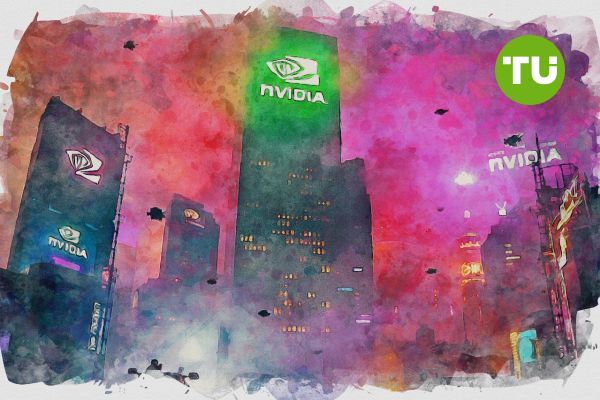Nvidia stock gains on trade truce as technical outlook remains weak
 The latest rally in Nvidia stock has been fueled by macroeconomic news
The latest rally in Nvidia stock has been fueled by macroeconomic news
As of April 10, 2025, Nvidia Corporation (NASDAQ: NVDA) is trading at $114.33, representing a remarkable gain of over 9% from the previous session.
The intraday price range has been volatile, stretching from a low of $94.61 to a high of $115.06, with the stock opening at $98.90. Trading volume was exceptionally high, with over 612 million shares exchanged, suggesting strong institutional participation in the latest upward move.
Despite this dramatic rally, Nvidia’s broader technical trend remains under pressure. The stock continues to trade below its key 50-day and 200-day moving averages, which are approximately $127.39 and $127.73, respectively. These levels have historically acted as resistance zones, and until the stock reclaims them, any bullish momentum should be viewed cautiously. The “death cross” pattern—where the 50-day moving average has crossed below the 200-day—remains in place and signals a bearish medium-term trend.
NVDA stock price dynamics (February 2025 - April 2025). Source: TradingView.
Momentum indicators provide a mixed picture. The Relative Strength Index (RSI) currently sits around 40.62, which is below neutral (50) but not yet in oversold territory (30 or lower). This implies some downside pressure remains, though the sharp bounce may attract momentum traders looking for a reversal. Key support lies at $105 and then $96. On the upside, resistance is expected at $130 and $150, both previously tested levels where sellers stepped in.
Market context and recent developments
The latest rally in Nvidia stock has been fueled by macroeconomic news rather than company-specific catalysts. On April 9, President Donald Trump announced a surprise 90-day pause on reciprocal tariffs—excluding China. The move was interpreted as a de-escalation in trade tensions and a bid to support market sentiment ahead of key inflation data. Semiconductor stocks surged across the board in response, with the PHLX Semiconductor Index (SOX) rising 18.7%, its strongest single-day gain since its inception in 1994. Nvidia was among the biggest gainers, jumping 18.7%, its best performance in nearly two years.
While this news provided immediate relief, Nvidia still faces structural risks. A proposed 32% U.S. tariff on Taiwanese imports could have material implications for its operations. Nvidia relies heavily on Taiwan Semiconductor Manufacturing Company (TSMC) for advanced chip fabrication. Any disruption to that relationship could impact product timelines, cost structures, and ultimately margins. This geopolitical risk remains a persistent overhang for the stock.
Additionally, broader concerns about AI valuations and tech sector pricing persist. Nvidia has been a poster child for AI-related growth, but macroeconomic uncertainty—especially around interest rates and inflation—continues to pose challenges for high-multiple stocks.
Price scenarios
Looking forward, Nvidia’s stock appears poised for continued volatility. If bullish momentum holds and the $105 support level remains intact, the stock could attempt a move toward $130. A sustained break above $130 on strong volume would be the first sign of a genuine trend reversal and could open the door to testing $150 in the medium term.
However, if this rebound fades and Nvidia fails to reclaim its 50-day moving average, renewed selling pressure could send it back toward $96. The ongoing geopolitical developments and any shift in Federal Reserve tone could influence which path materializes.
Earlier this week, Nvidia's stock faced renewed pressure as U.S. tariffs and export restrictions on AI hardware deepened concerns over its China exposure and supply chain disruptions. While Bank of America remains optimistic on Nvidia's long-term AI leadership, rising geopolitical tensions, growing competition from Chinese firms like DeepSeek, and macroeconomic volatility continue to weigh on its near-term outlook.













































































































































